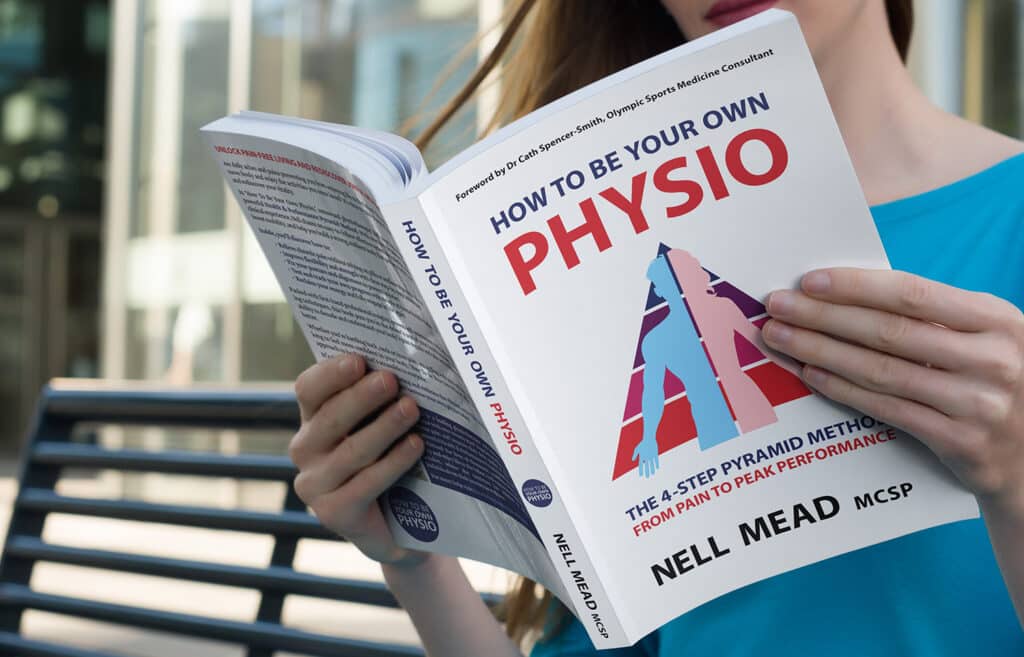Let’s talk some more about hips…
In my last post, I talked about how I managed to tear my hip cartilage while playing tennis; and I mentioned that a common cause of cartilage tears is femoroacetabular impingement, also known as FAI or hip impingement.
Although the concept of hip impingement was first recorded in 1936, it wasn’t until the early 2000s that clinicians and researchers really started to look at a surgical solution or to link it with osteoarthritis and labral cartilage tear. In subsequent years, the number of FAI diagnoses, and patients undergoing surgery for FAI, has risen quite dramatically – which had led to lots of questions, including: is it being diagnosed appropriately, and is surgery always the answer?
Earlier this month I attended a talk about FAI, presented by one of the leading British hip surgeons, Professor Damian Griffin, who operates from the new Schoen Clinic in Marylebone. So today I’m presenting the latest surgical thinking on hip impingement… and as usual, some of my own thoughts from a physiotherapeutic perspective.
What is hip impingement?
Firstly, what is FAI? Well, it is a problem with both structural and functional facets – not one or the other. Diagnosing FAI is only done correctly if the patient has a combination of
- signs (what the medical professional sees and tests)
- symptoms (what the patient experiences)
- imaging – so an X-ray on its on cannot be used to definitively diagnose FAI.
The hip joint is a ball and socket. As I mentioned last time, the surface area of the socket isn’t big enough to hold the ball firmly in place, so the rim of the socket (or acetabulum) is augmented by a circle of cartilage called the acetabular labrum.
In the ideal world, the beautifully smooth, round ball sits perfectly in the centre of the perfectly-sized and shaped socket, and it rotates smoothly, maintaining its intra-articular pressure and joint space to minimise the stresses on the joint and labral cartilage. The muscles acting on the hip are perfectly balanced, so that no matter what direction the hip moves in, its stabiliser muscles are maintaining an even force across the ball, keeping its axis of movement in the centre of the socket. This prevents hip impingement.
Alas, that’s not always the case.
Structural problems in the hip
First, we have to consider what can go wrong from a structural perspective – bearing in mind that it’s actually relatively unusual to have a perfectly shaped joint (but if yours is perfect, then you won’t get hip impingement!)
There are two main types of FAI, known as cam and pincer. Effectively, a cam defect is a badly-shaped ball (on X-ray you’ll see a bump instead of a hollow where the head of the femur transitions into the neck) and a pincer defect is an overgrown socket, where the bone of the socket covers too much of the ball. Either way, if you have too much bone in your hip, then it doesn’t leave enough space for cartilage.
Functional problems in the hip
We then have to consider function.
As we’ve discussed over the past few months, muscle imbalance is very common. This can be due to injury (pain and dysfunction leading to overworked movers and inhibited stabilisers), to habitual poor posture (muscles on one side of the body becoming short and tight, with those on the other side becoming long and weak), to dodgy sporting technique, poor balance or loss of strength (all of which can lead to compensation patterns).
Muscle imbalance around the hip joint occurs when the forces pulling on the ball from one side are not equal to the forces from the other side. That means that when the ball moves within the socket, the axis of movement is likely to move around, rather than staying directly (and optimally) through the centre of the socket. Too much uncontrolled movement puts you at risk of hip impingement.
Problems with structure + problems with function = trouble
In other words, if you have too much bone in your hip, and movement patterns that aren’t optimally controlled, and you like to use your hip hard and repeatedly, especially at the end of range (for example, you play sports or lift weights regularly) then eventually your luck may run out, and you may develop hip impingement. This can cause damage to the labrum or lead to you starting to feel pain in the joint cartilage or capsule – and in the longer term, this can lead to early onset arthritis.
So, what can be done?
Step 1: diagnosis
Well, the first thing is to get a diagnosis – it’s easier when you know what you’re dealing with. Knowing that there’s too much bone, and/or how severe the internal damage is, may change the way your hip is and should be managed.
Getting a diagnosis could start with a physio or with a doctor. But either way, we’ll be asking you questions about where you feel the pain, what it feels like, and when you feel it (it tends to be motion- or position-related pain in the groin or buttock, possibly associated with clicking, catching or giving way). We’ll also be wiggling your hip around (gently, if it’s sore!) to see whether we can reproduce your symptoms. This helps us to get an idea of where any damage is likely to be. Finally, if we still suspect hip impingement, it’s time to get some imaging done.
The 2016 Warwick Agreement on FAI (an international conference that was arranged to come to a consensus on the best way to diagnose and treat FAI) is clear that specific X-ray views are required, and then says that if further imaging is needed, then “cross-sectional imaging” may be appropriate. This means CT (effectively a 3D X-ray) or MRI. Interestingly, the different surgeons I’ve spoken to about hip impingement like slightly different types of cross-sectional imaging. Some, like Paul Jairaj at the Schoen Clinic, prefer 3T MRI (which provides higher resolution than standard MRI). Others, like Venu Kavarthapu at London Bridge Orthopaedics, prefer MRA or magnetic resonance arthrogram, which is an MRI scan with a radioactive dye which can show how active the cartilage is (which corresponds to recent damage and healing).
Step 2: treatment
Once you have a diagnosis, then what? Well, treatment is and should be planned at a case-by-case level. However, the basic options are:
- Physiotherapy and rehabilitation (there are many different options here, which I suspect will be a whole blog post in itself; but the overall goal is to restore pain free movement and muscle function, integrated with the rest of the body)
- Physiotherapy and rehabilitation augmented by a corticosteroid injection, which is designed to provide a window of opportunity for physio to take hold, as the powerful anti-inflammatory effects of the steroid reduce the irritation in the hip which can hinder conservative treatment
- Arthroscopic (keyhole) surgery to remodel the ball and/or socket, and/or repair the labrum, followed by physiotherapy and rehabilitation
- Open surgery to remodel the ball and/or socket, and/or repair the labrum, followed by physiotherapy and rehabilitation
The aim is to be as minimally-invasive as possible, so in the vast majority of cases, a decision to operate is not taken early – even if you do end up needing surgery, it will almost always be to your advantage to have a good course of physiotherapy and rehabilitation beforehand, to optimise your muscle balance, because the better your muscles are before you have surgery, the easier it is to recover afterwards.
Does it work?
And the prognosis? Well, given that the causes and the effects of hip impingement are both wide ranging, it’s hard to be definitive. Certainly, my own small labral tear has responded to rest (from tennis) and rehabilitation; and the Warwick Agreement concluded that in patients who are appropriately treated for FAI (whether that treatment is conservative or invasive), symptoms frequently improve and they return to full activity including sports (hurrah!) However, without treatment, the symptoms do generally worsen over time, and the current thinking is that hip impingement is associated with early onset arthritis.
So – if you have pain in your hip, groin or buttock, and especially if you have any signs of clicking, catching or giving way, then don’t hang around – call my team on 0207 175 0150, and come in and let me check you out with a thorough 90-minute physiotherapy assessment, so that if you do have FAI, it can be diagnosed and treated as early as possible.







